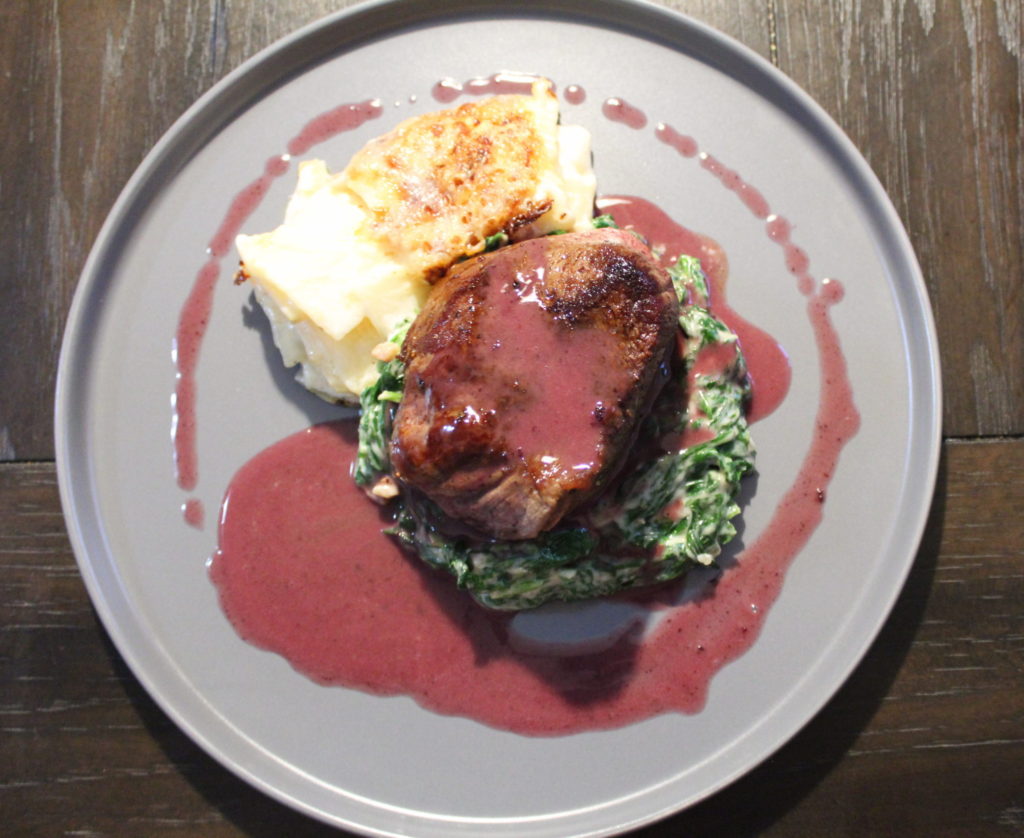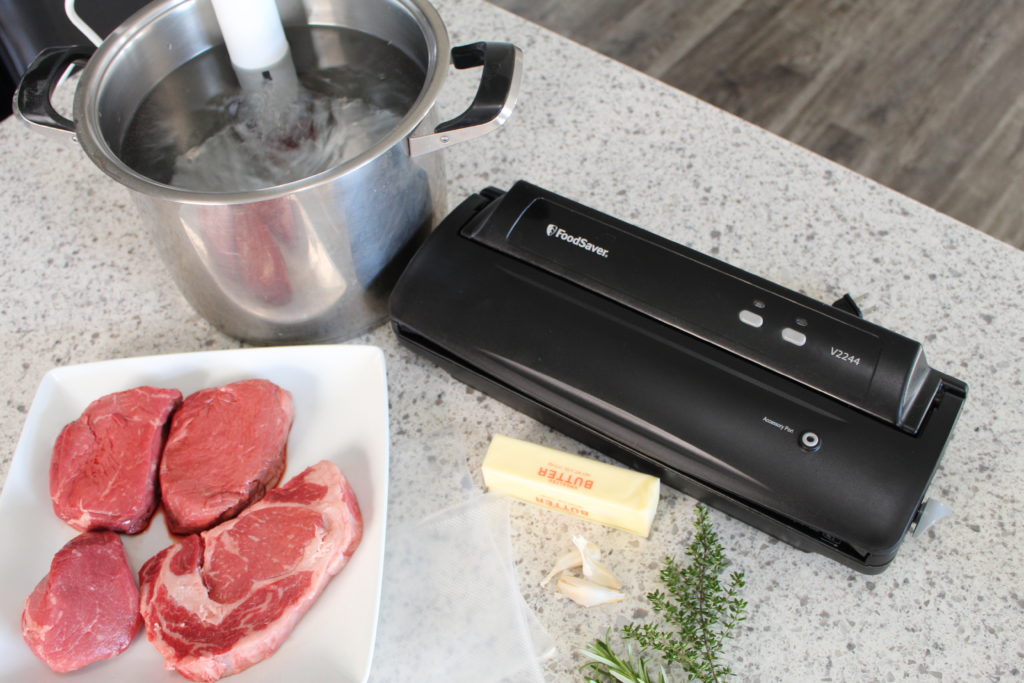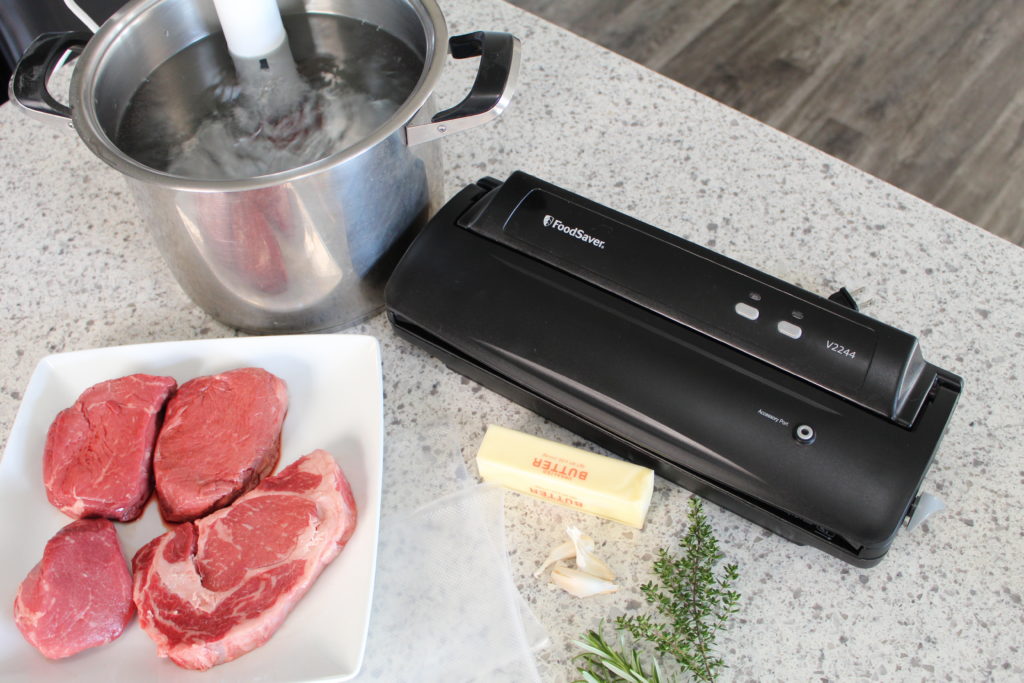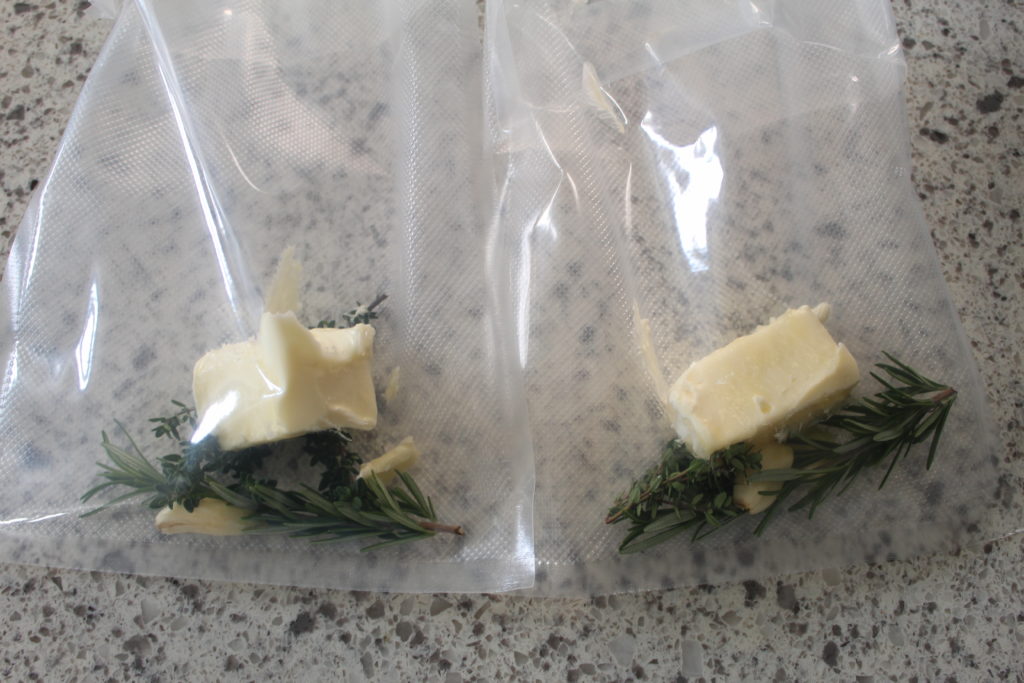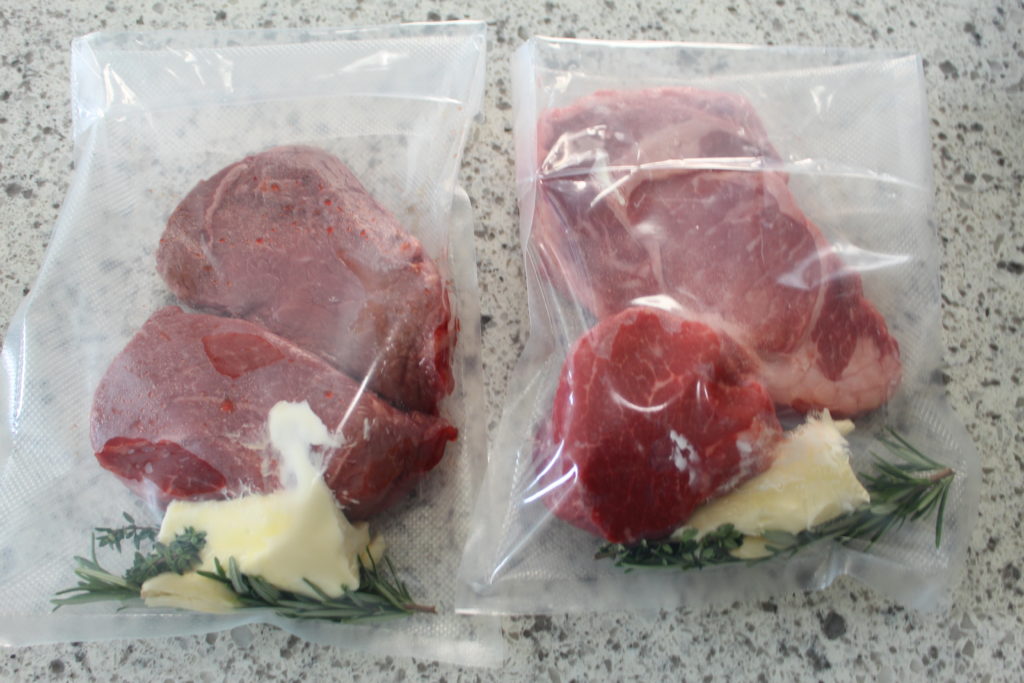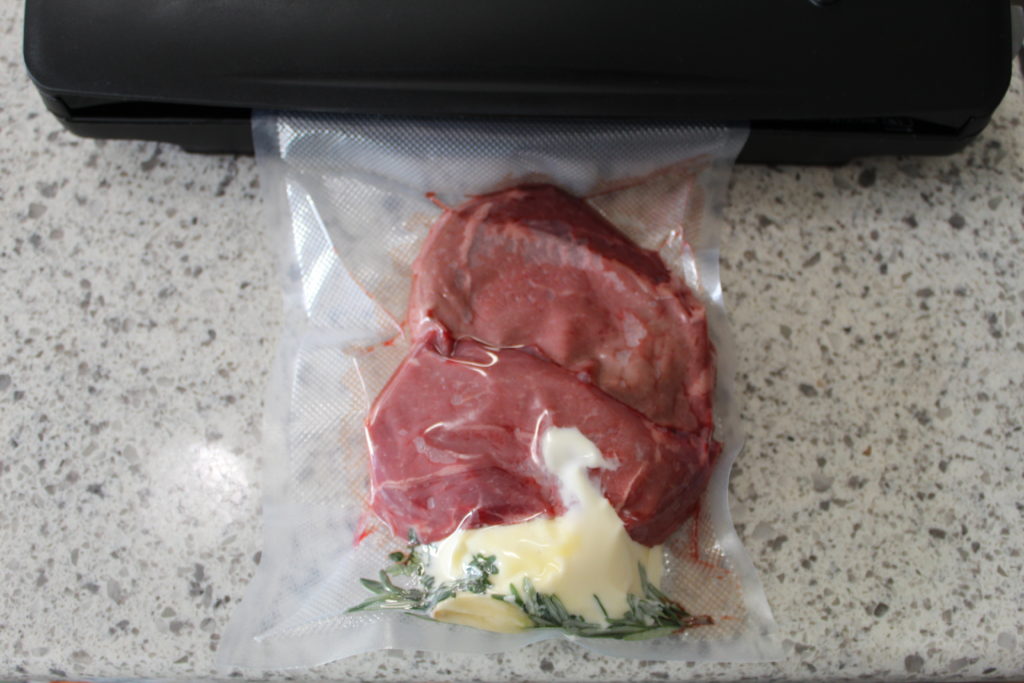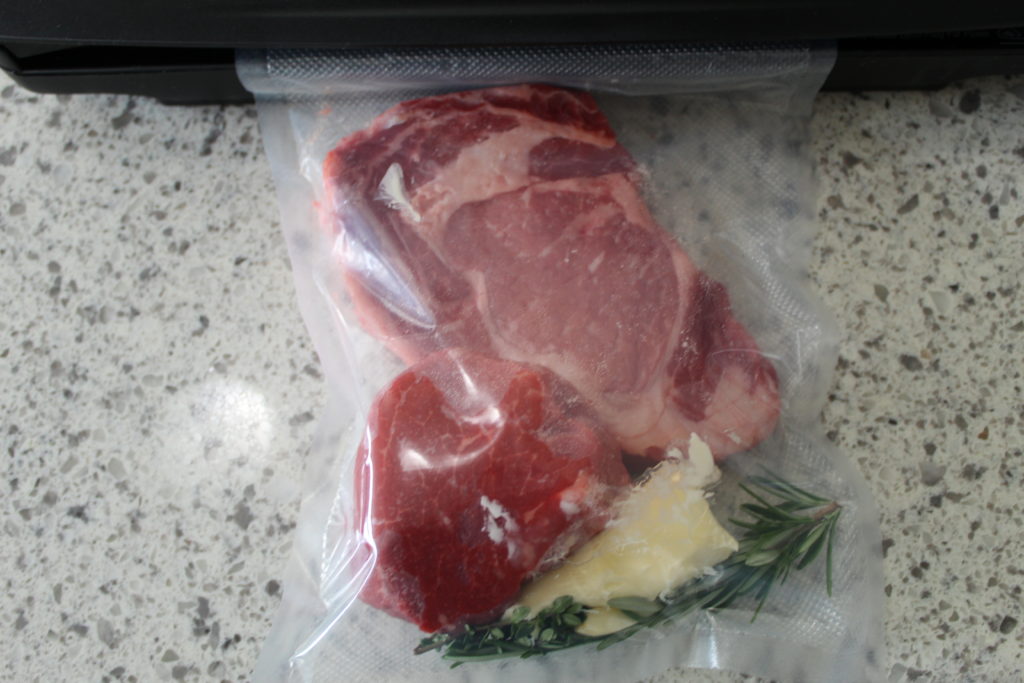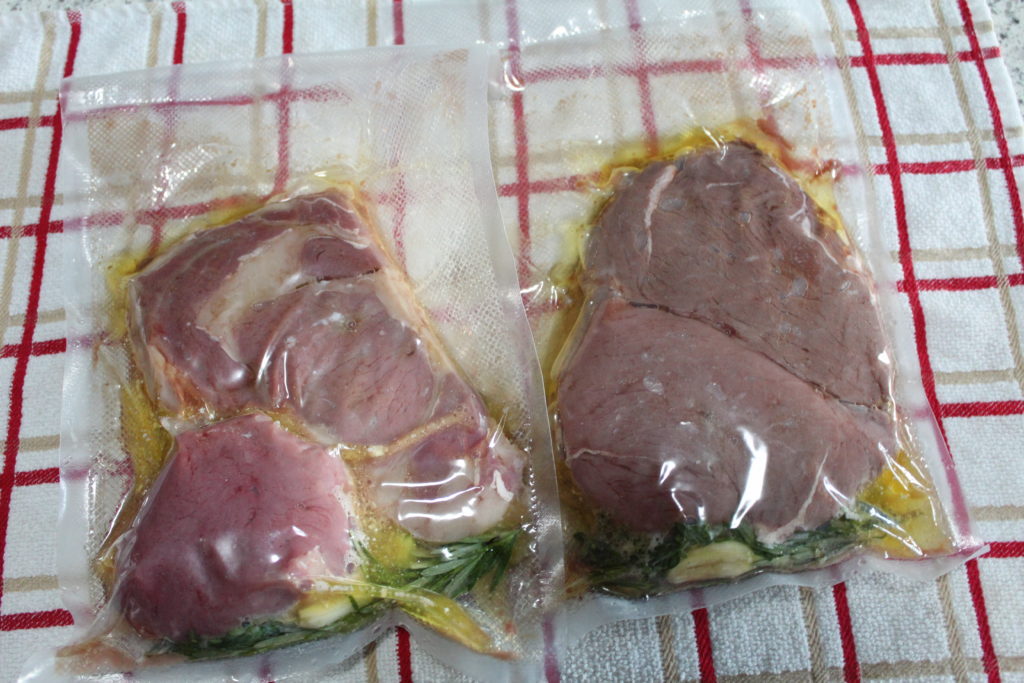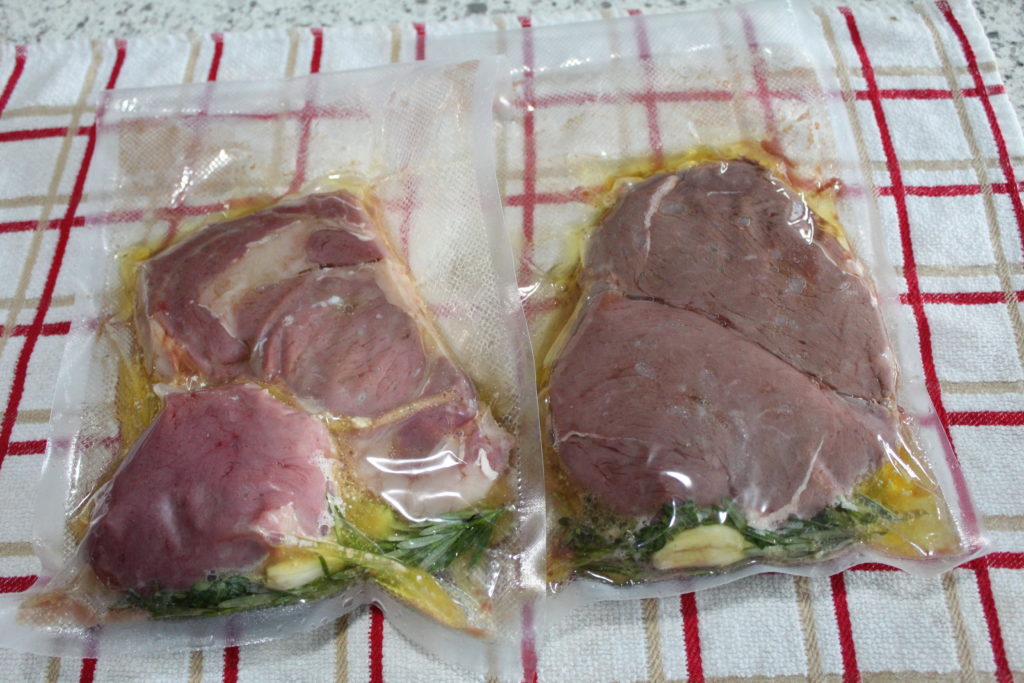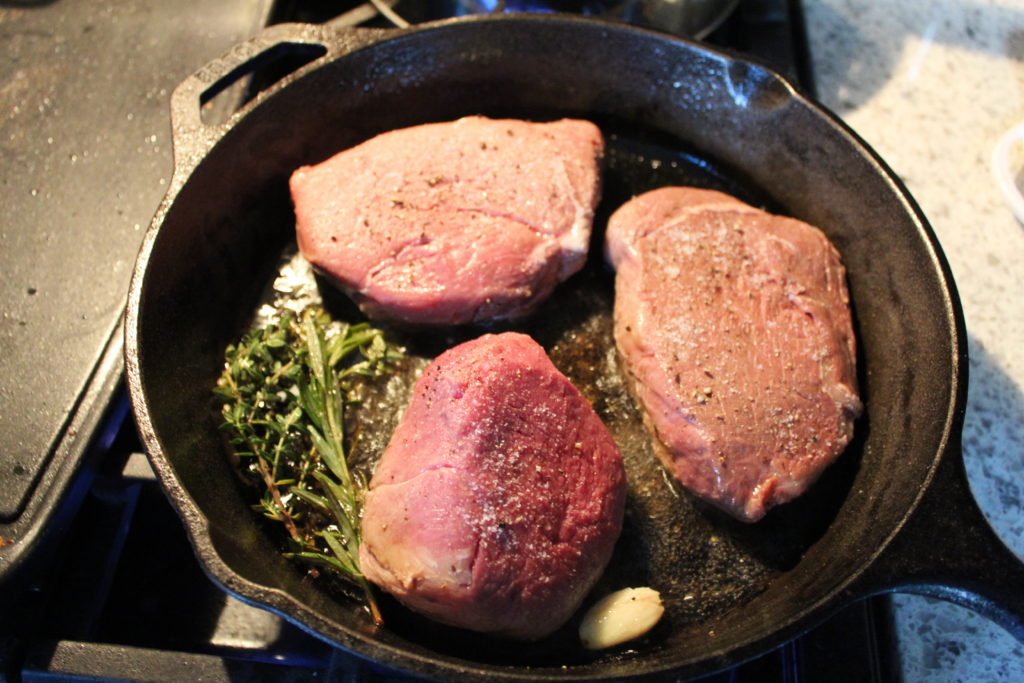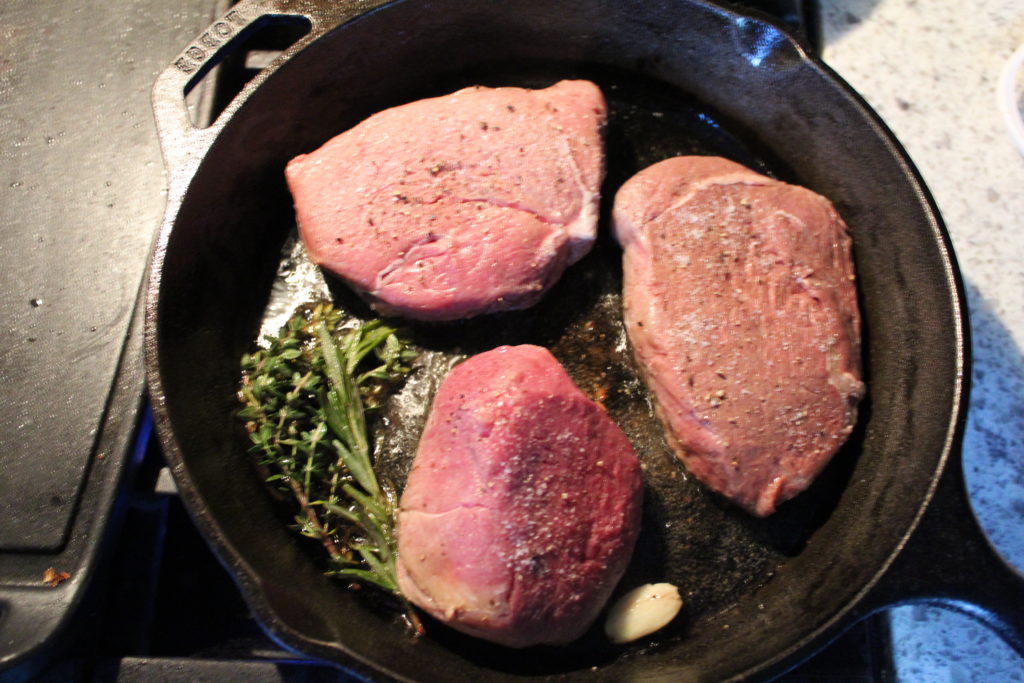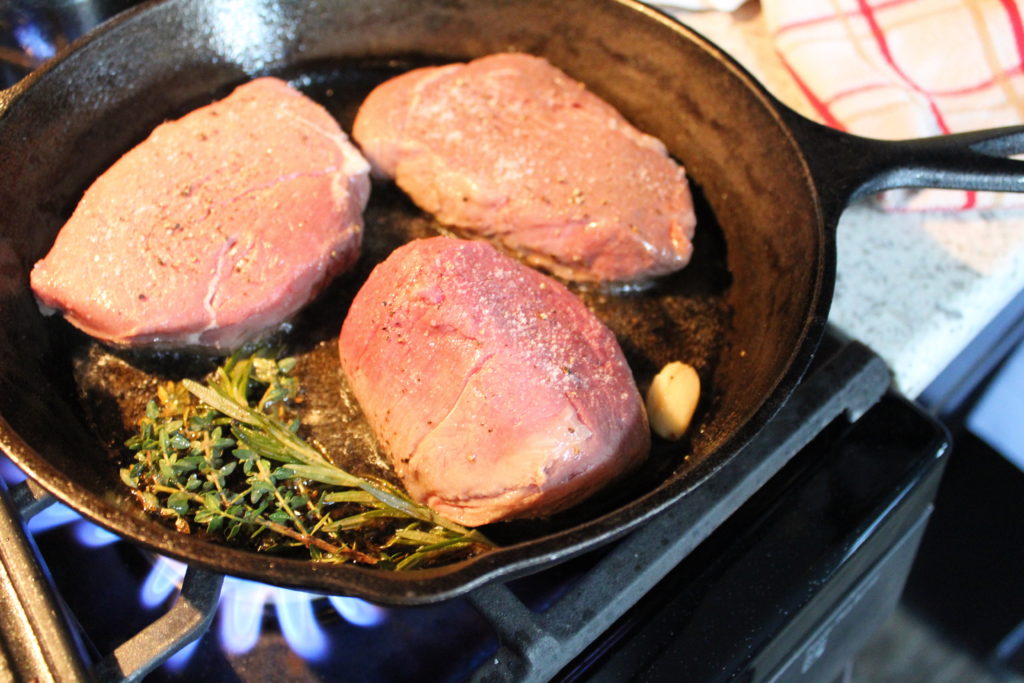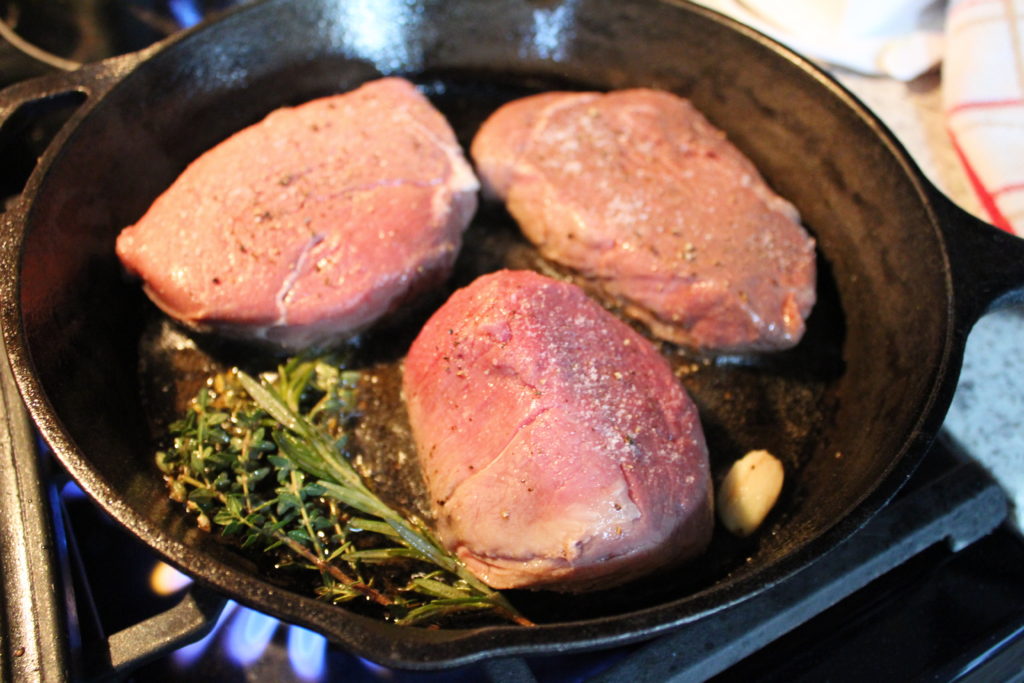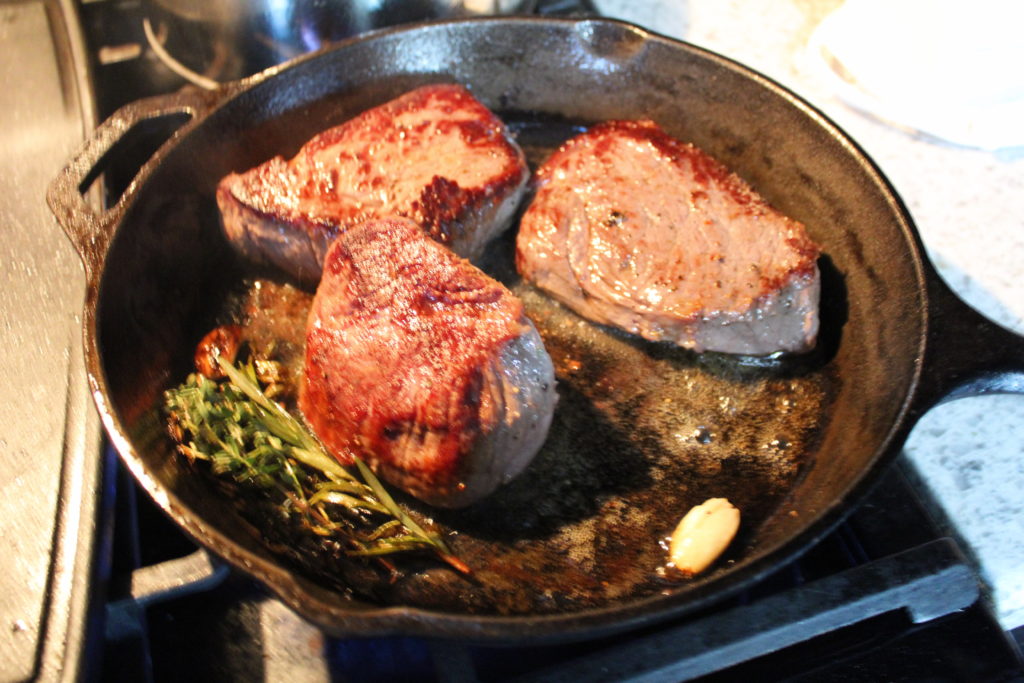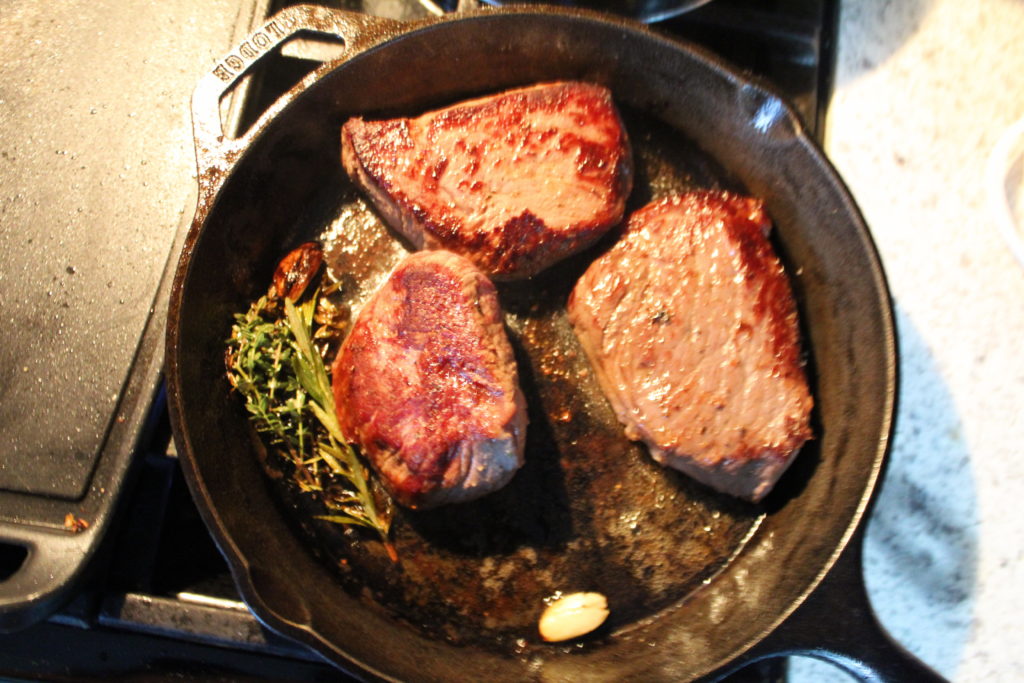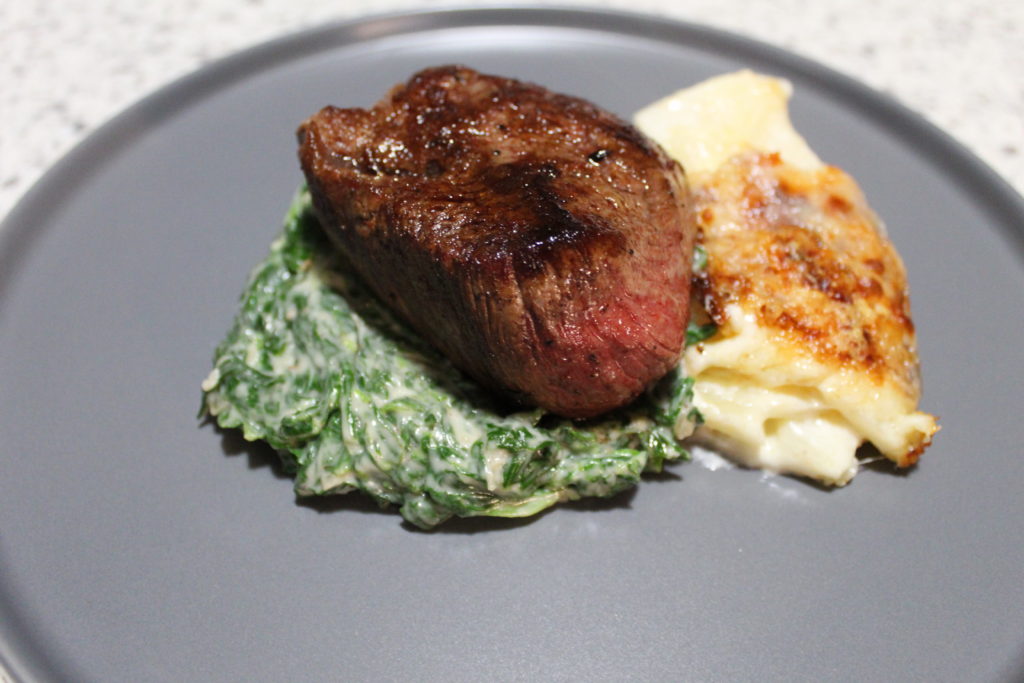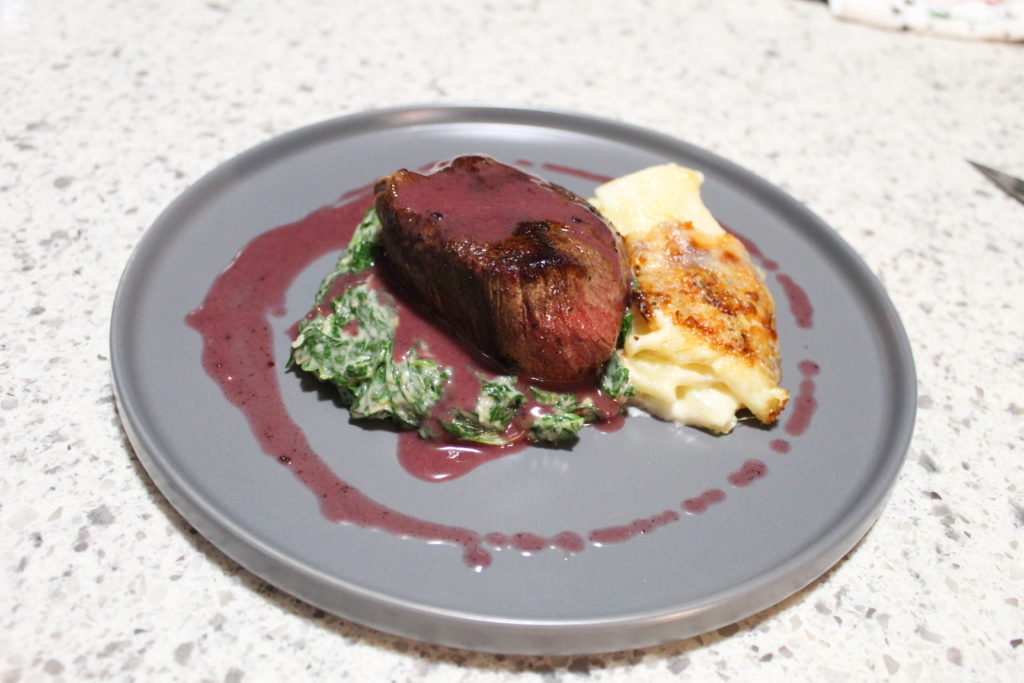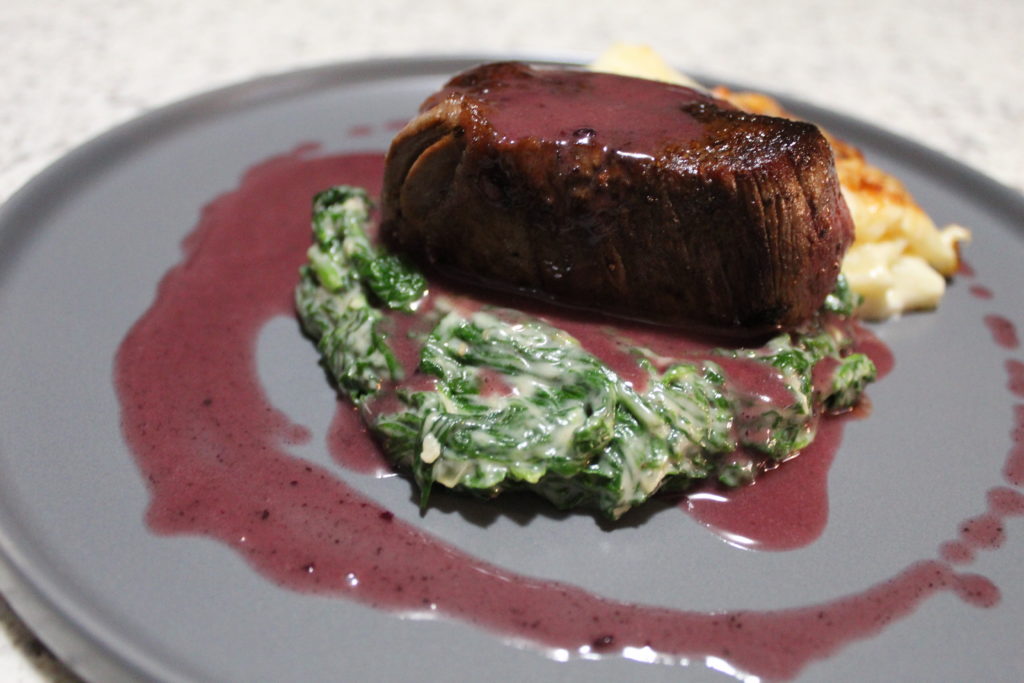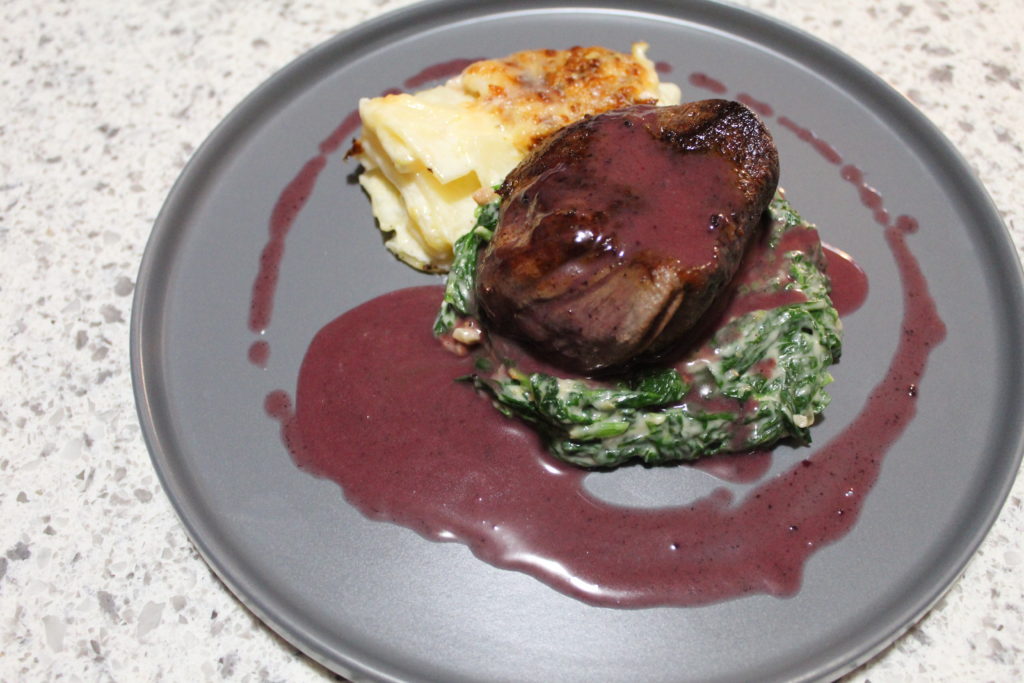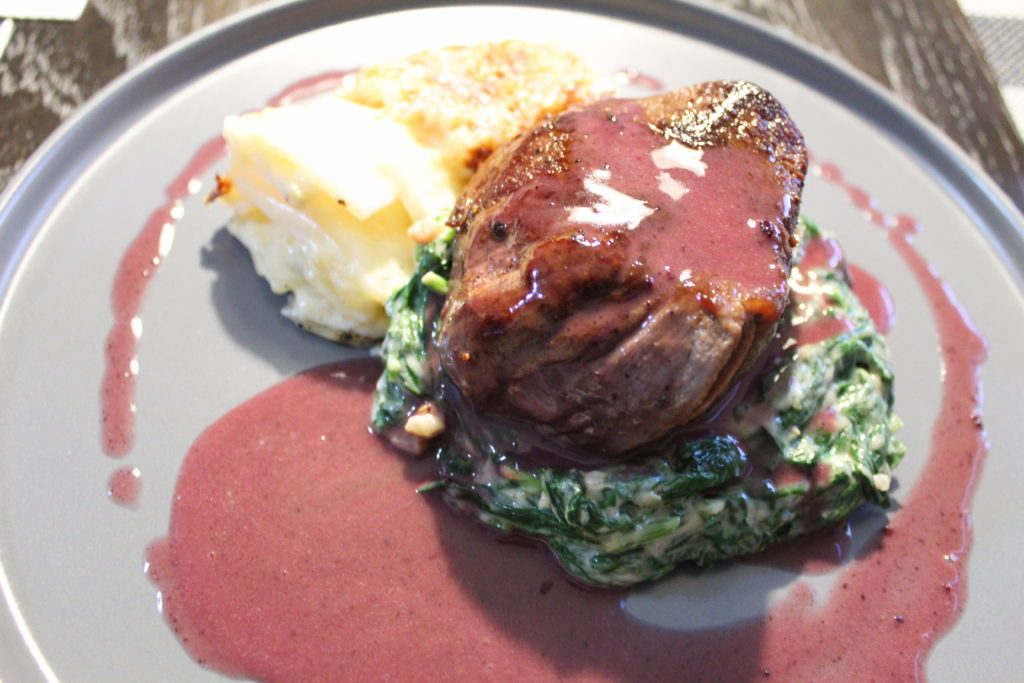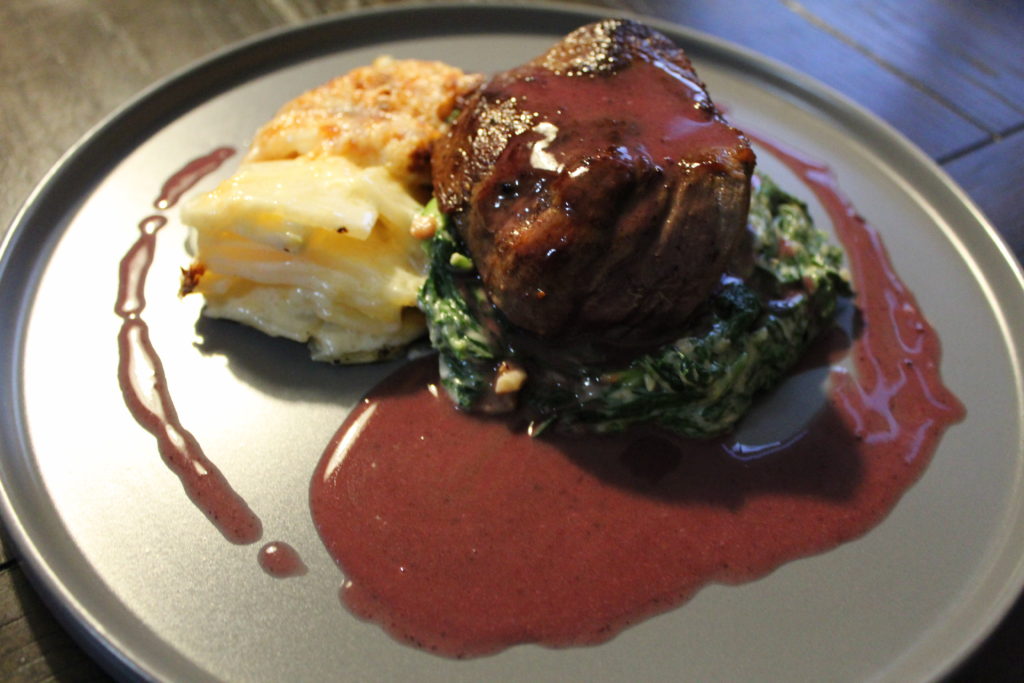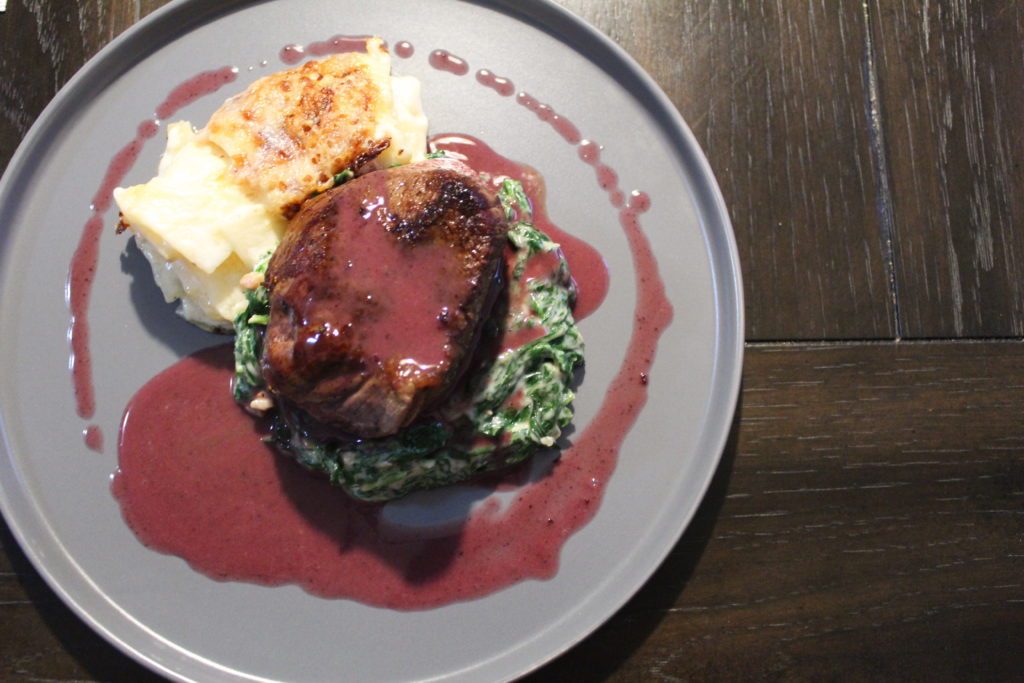It looks like we are going to get a little fancy today. Steaks on the menu and I am going to pull out the immersion circulator and sous vide my steaks. You may have heard the term sous vide before, or maybe you haven’t. Sous vide is method of cooking which has become more and more popular over the last couple of years. It is used by both professional kitchens and at home to perfectly cook almost any food you can think of. But what does it mean to sous vide something?
Sous vide is a French term which means “under vacuum” and refers to vacuum sealing different foods in a bag and submerging in a water bath heated to a specific temperature. This method of cooking can be used for different meats, vegetables, fruits, or grains. Some of the benefits of cooking sous vide are in the ease of use, the textures and tenderness of foods, food is never over cooked, and consistency. You can do bulk cooking with meats for a large dinner and make sure that the results are the same for each meal. One of my favorite things about using this technique with steaks is the minimizing of your traditional temperature rings. If you were to cook a steak in a traditional way, like searing or grilling, and then cut that steak down the middle you would see “rings” of different temperatures. For example, on the outside where it saw most of the heat, it would be seared and well done. Further in, it would be medium well, followed by medium, then finally medium rare. With the sous vide technique, the entire steak, from end to end, will be exactly the temperature you want it to be. If you choose to sear the edges to get a crispy crust (which I highly recommend), there will be a much more subtle temperature ring. Basically, more steak cooked exactly how you want it. What do you need to get started working with the sous vide technique?
There are three main components to the sous vide cooking technique: a vacuum sealer, vacuum seal bags, and an immersion circulator. A vacuum sealer is a product that removes the air and seals food in a specific type of plastic bag. That bag is then submerged in water, kept at a certain temperature to cook the food. To keep the water constantly at the proper temperature we use a product called an immersion circulator. Basically, it moves or circulates the water while heating it to a certain temperature. The last component is the actual bag that you use. There are specific types of bags that are used with vacuum sealers that allow you to properly seal the bag to prevent any oxygen from getting back into the bag. There are several other components you can buy to make the process a bit easier but they aren’t necessary.
Today we are going to use this technique to make steaks worthy of your favorite steakhouse. First thing you want to do is set up your immersion circulator. I set mine to 120 F and let it begin to heat the pot of water. Depending on the temperature of the water you put in the pot it can take anywhere from 5-30 minutes to heat the water. 120 F you ask. Yep, 120 F. What we are trying to do is bring the steaks close to the finished temperature because we will be searing and cooking further later, that will bring the internal temperature up anywhere from 5-10 degrees. And allowing it to rest after the sear will bring it up another few degrees, so we need to aim for about 15 degrees less than our targeted temperature. If you are unsure of what temperature of how you like your steak cooked, I have included a small cheat sheet below.
- Rare = 125 F – 130 F
- Medium Rare = 130 F – 135 F
- Medium = 135 F – 145 F
- Medium Well = 145 F -155 F
- Well = 155 F and above
After we get the circulator going, we need to vacuum seal our steaks. You can seal them individually or in pairs, and it is up to you whether you add any additional flavorings to the bag. I like to add butter, smashed garlic, rosemary, and thyme. Once you get all your ingredients in the bag, vacuum and seal. It is very important to make sure there are no creases where the bag is going to be sealed. If there is a crease, the bag will not seal properly and when you submerge it, air and or water will make its way into the bag which is a no no. If you are having trouble sealing the bag without having a crease, then chances are you are over filling the bag. I did two steaks per bag with about 3 tablespoons of butter, 2 cloves of garlic, and a small sprig each of thyme and rosemary. Seal the bag(s) and pop them in the 120 F water. I like to take a chip clip or paper binder and clip the tops to the side of the pot to prevent the seal from going under the water. If you do have a hole where it sealed, water won’t be able to get in the bag.
Allow the steaks to “swim” for about an hour. Most steaks you get from your local butcher’s will be between 8-12 oz and shouldn’t be big enough to require much more time than that. If you are cooking a tomahawk ribeye, then good luck to you. It will be tough to get a sealer and a bag big enough to hold the steak, unless you work in a professional kitchen. But if you can, sweet, you will most likely need longer for the larger cut.
When you are coming up on an hour of swim time, you can put your cast iron pan on the stove over medium heat. Pull the bag(s) from the water and cut them open. Remove the steaks and pat them dry with a paper towel. Season well with salt and pepper. In the skillet, add about 2 tablespoons of canola oil, two cloves of crushed garlic, a sprig each of rosemary and thyme. Add your steaks and sear until you get a golden brown crust, should take between 2-3 minutes. Flip the steaks and sear the other side until you reach the same golden crust as the top. Remove from the pan and allow your steaks to rest. Resting your cooked meat, no matter what it is, is very important. If you don’t let your steak rest before cutting into it, the juices will be on your plate and not in the meat. Dry meat is gross, juicy meat is good. Have juicy meat, let it rest for about 5 minutes while you plate up and finish the rest of your food.
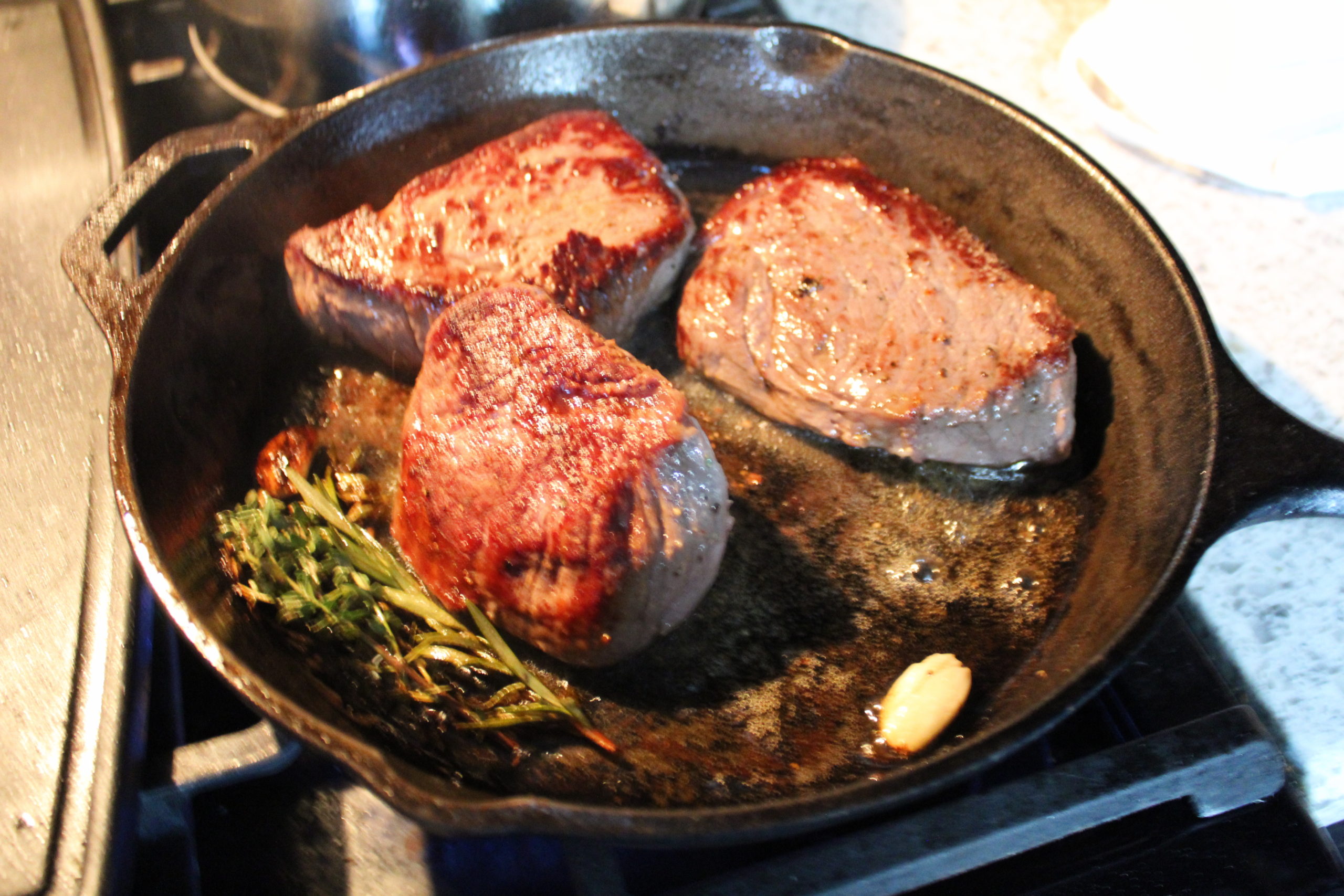
Sous Vide Steak
Equipment
- Immersion circulator
- Vacuum sealer
- Vacuum seal bags
Ingredients
- 4 each steaks your choice on cut
- 6 tbsp butter
- 4 cloves garlic smashed
- 2 sprigs rosemary small sprig
- 2 sprigs thyme small sprig
- 2 tbsp canola oil
- salt to taste
- pepper to taste
Instructions
- Add two steaks, half the butter, two cloves of garlic, and one sprig each of thyme and rosemary to a vacuum seal bag. Repeat with other steaks and the rest of the butter, garlic, and herbs.
- Heat water to desired temperature.
- Seal both bags, and drop in the water for 1 hour.
- After an hour, remove steaks from bag. Pat dry with a paper towel.
- Season steaks well with salt and fresh ground black pepper
- Heat a cast iron skillet over medium heat. Add canola oil, garlic and herbs from one bag.
- Sear steaks until golden brown, flip and repeat until crust is formed on the outsides. 2-3 minutes per side. Remove from pan.
- Allow steaks to rest for 5 minutes before serving.
With our steaks I served homemade au gratin potatoes, and bacon creamed spinach. I made a simple pan sauce for the steaks and some crispy onions that I apparently didn’t include in my final pictures. Shame on me! I am going to do something a little different and post the sides over the next day or two so my post doesn’t get too long and rambly. Thank you for reading, if you have any comments or questions reach out. If you follow me on social media, a like and a share would be just lovely. Thanks a ton. Cheers!
To be continued…

